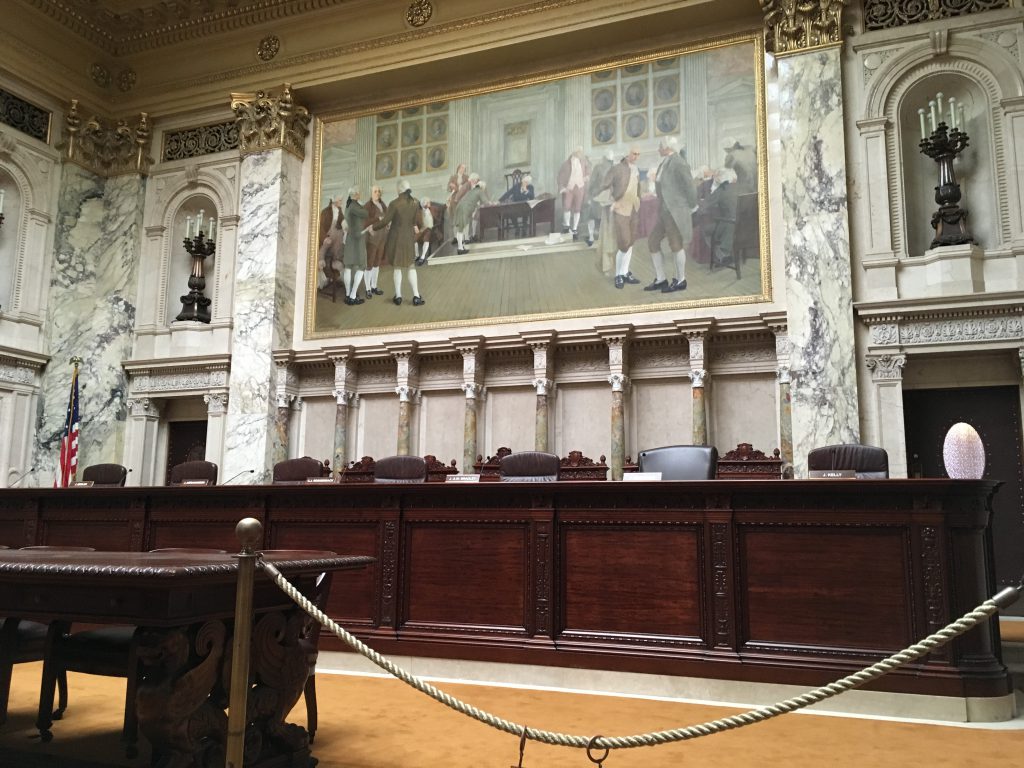How Republicans Won Redistricting Fight
The impact is huge. How did it happen?
Redistricting is the once-a-decade drawing of boundaries for new U.S. House, state Senate and state Assembly districts based on new Census figures and often decides who will and won’t have political power in Wisconsin. Which is why it’s important to review how a two-year fight ended with new districts being drawn on April 15.
In a Good Friday surprise, a 4-3 order by the state Supreme Court implemented Assembly district lines drawn by Republicans who have controlled the Legislature since the last set of boundaries were drawn in 2011. One Senate district includes three Assembly districts.
Hagedorn ended up upholding “the very maps [he] previously found to unlawfully ‘pack’ black voters,” Evers complained.
The Evers-drawn maps had been challenged in the U.S. Supreme Court, where seven of the nine justices ruled that the Wisconsin justices had misinterpreted the Voting Rights Act by creating a potential seventh majority-minority Assembly district in Milwaukee. The governor’s plan included “just the sort of uncritical majority-district maximation that we have expressly rejected,” the U.S. Supreme Court ruled..
The U.S. Supreme Court’s tossing of the governor’s district lines continued the court’s downplaying of race as a factor in states’ redistricting maps. That trend comes almost 57 years after President Lyndon Johnson signed the Voting Rights Act that abolished literacy tests and poll taxes enacted to disenfranchise African American voters and gave the federal government the authority to take over voter registration in counties with a pattern of persistent discrimination.
The Wisconsin Elections Commission (WEC) is notifying local clerks of exact new district lines for Assembly and Senate districts, preparing for August primaries and Nov. 8 general elections for U.S. Senate, U.S. House, governor, attorney general and the Legislature. Candidates for the Legislature must circulate nomination papers in those new districts and file them with the WEC by June 1.
The timeline leading to the new maps tells a two-year tale with many twists and turns:
-Jan. 22, 2020: Evers announces creation of a nonpartisan People’s Maps Commission to “visit every congressional district, hear directly from folks across our state, and draw fair, impartial maps for the Legislature to take up next year.”
-Aug. 13, 2021: Democrats file a federal court lawsuit over redistricting, arguing that federal judges must intercede and draw the next set of maps since Republican lawmakers and Evers won’t agree.
-Sept. 22, 2021: Wisconsin Supreme Court agrees to take control of Wisconsin’s redistricting process, accepting the petition of the conservative Wisconsin institute for Law and Liberty. The state court also agrees to the Republicans’ “least change” goal for the lines.
-Sept. 24, 2021: Republican legislative leaders ask the U.S. Supreme Court to block the Democrats’ federal court lawsuit, saying a federal judge had overstepped his authority by getting involved in redistricting, which state law says must be done by state officials.
-Nov. 2, 2021: People’s Maps Commission announces its boundaries for U.S. House, Assembly and Senate districts.
-Nov. 8, 2021: The state Senate passes the Republicans’ “least changes” redistricting plan on a party-line 21-12 vote, sending it to the Assembly. That vote came after the Senate rejected, 22-11, a plan sponsored by all Senate Democrats except Sen. Lena Taylor. The Senate also rejected, on another 22-11 vote, the maps offered by the People’s Maps Commission.
-Nov. 11, 2021: The state Assembly passes, with 60 Republicans voting yes and 38 Democrats voting no, the Senate’s redistricting plan. The Assembly also rejected, on a 77-21 vote, the People’s Maps Commission plan. Seventeen Democrats joined all 60 Republicans in voting against that plan.
-March 3, 2022: Hagedorn and three other justices order implementation of the Evers-drawn maps, citing their fairness.
-March 23, 2022: The U.S. Supreme Court overrules the state Supreme Court, saying the state court misinterpreted the Voting Rights Act on the question of a seventh majority-minority Assembly district in Milwaukee. The U.S. Supreme Court, however, accepts boundaries for the state’s eight U.S. House districts.
-April 15, 2022: The State Supreme Court orders that Republican-drawn maps be in place.
A chastened Hagedorn writes: “The Wisconsin Constitution does not preclude the Legislature from drawing districts with partisan interests in mind.”
Steven Walters started covering the Capitol in 1988. Contact him at stevenscotwlters@gmail.com
More about the Gerrymandering of Legislative Districts
- Without Gerrymander, Democrats Flip 14 Legislative Seats - Jack Kelly, Hallie Claflin and Matthew DeFour - Nov 8th, 2024
- Op Ed: Democrats Optimistic About New Voting Maps - Ruth Conniff - Feb 27th, 2024
- The State of Politics: Parties Seek New Candidates in New Districts - Steven Walters - Feb 26th, 2024
- Rep. Myers Issues Statement Regarding Fair Legislative Maps - State Rep. LaKeshia Myers - Feb 19th, 2024
- Statement on Legislative Maps Being Signed into Law - Wisconsin Assembly Speaker Robin Vos - Feb 19th, 2024
- Pocan Reacts to Newly Signed Wisconsin Legislative Maps - U.S. Rep. Mark Pocan - Feb 19th, 2024
- Evers Signs Legislative Maps Into Law, Ending Court Fight - Rich Kremer - Feb 19th, 2024
- Senator Hesselbein Statement: After More than a Decade of Political Gerrymanders, Fair Maps are Signed into Law in Wisconsin - State Senate Democratic Leader Dianne Hesselbein - Feb 19th, 2024
- Wisconsin Democrats on Enactment of New Legislative Maps - Democratic Party of Wisconsin - Feb 19th, 2024
- Governor Evers Signs New Legislative Maps to Replace Unconstitutional GOP Maps - A Better Wisconsin Together - Feb 19th, 2024
Read more about Gerrymandering of Legislative Districts here
The State of Politics
-
A Wisconsin Political Trivia Quiz
 Dec 15th, 2025 by Steven Walters
Dec 15th, 2025 by Steven Walters
-
The Fight Over Wisconsin’s House Districts
 Dec 8th, 2025 by Steven Walters
Dec 8th, 2025 by Steven Walters
-
The Battle Over On-Line Betting
 Nov 24th, 2025 by Steven Walters
Nov 24th, 2025 by Steven Walters























There’s been no shortage of Republican duplicity, but regretfully low voter turnout at crucial elections made their dirty work easier. The 2010 general election, as well as most spring judicial elections are examples .
They didn’t win they stole.